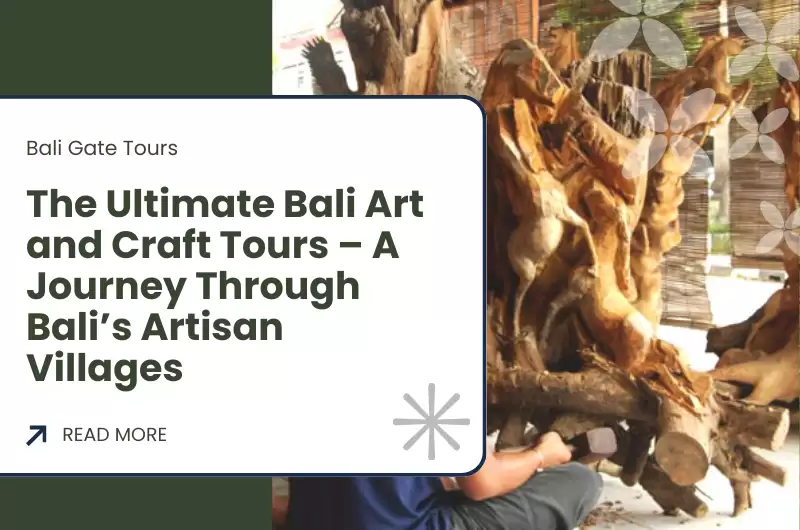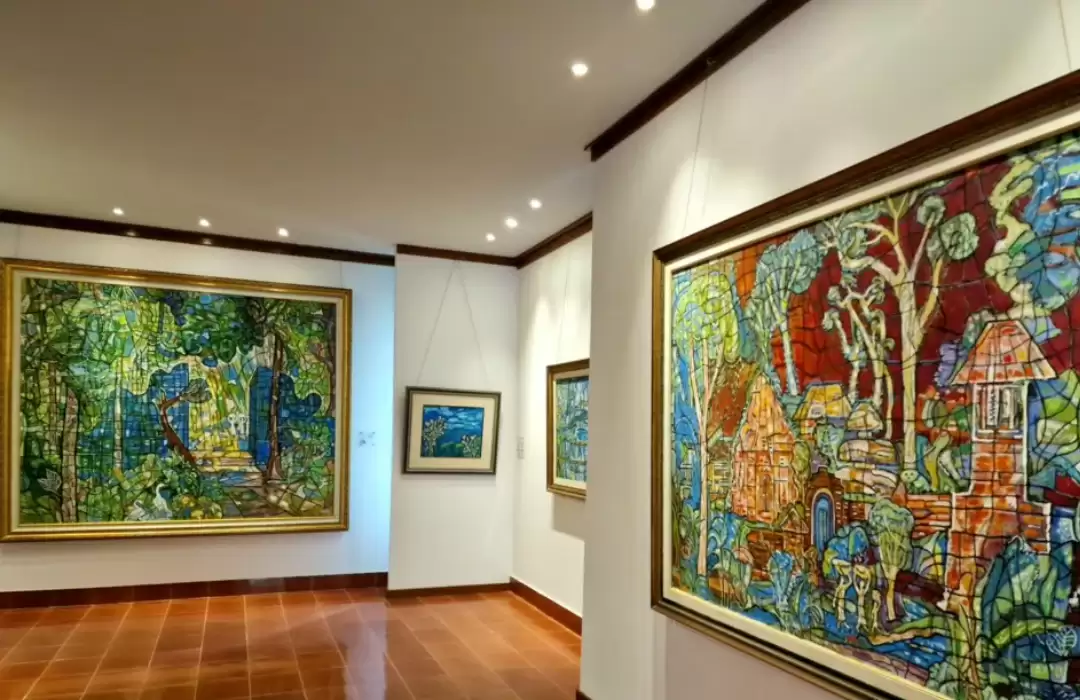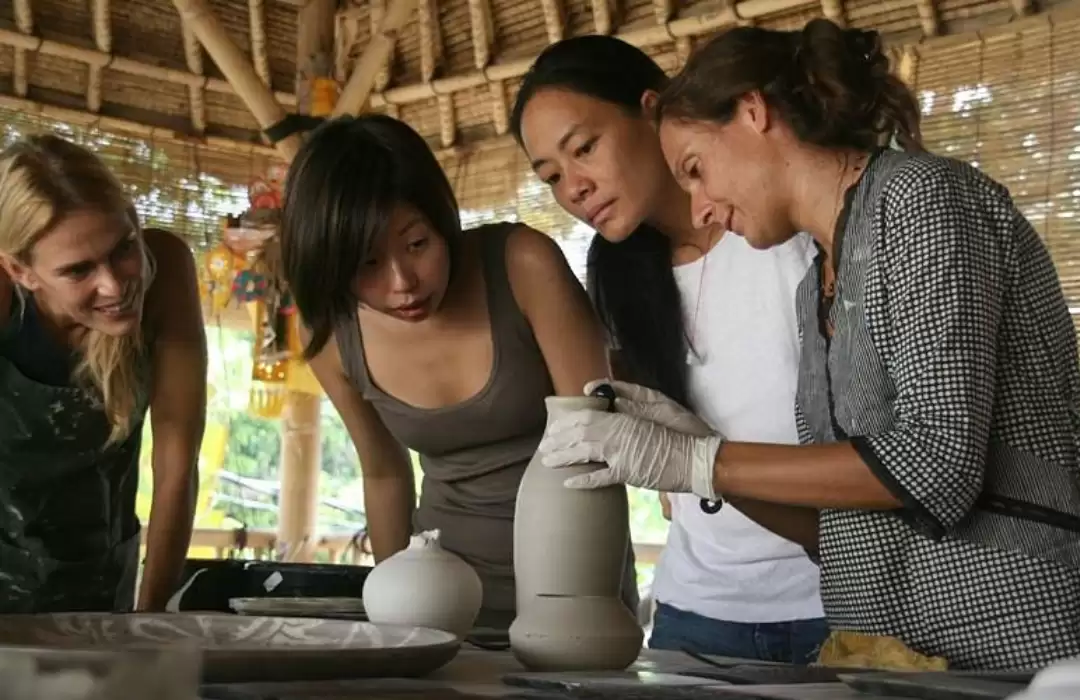The Ultimate Bali Art and Craft Tours – A Journey Through Bali’s Artisan Villages

Bali is a land of art, culture, and spirituality, and nowhere is this more evident than in its artisan villages. While the island is famous for its vibrant temples, lush rice terraces, and beautiful beaches, its crafts and art are just as central to the culture. The island’s traditions, passed down through generations, have shaped a unique and rich artistic landscape.
Bali’s artisan villages are home to talented local craftspeople who keep the island’s artistic heritage alive. From intricately handwoven textiles to beautifully carved wood, each village has its own specialty, preserving the skills and techniques that have been honed for centuries. For those who are keen to immerse themselves in Bali’s cultural richness, a Bali art and craft tour is an unforgettable experience. These tours provide a unique opportunity to visit some of the island's most authentic villages and meet the artisans who create works of art that reflect the island’s vibrant culture.
Whether you are a passionate collector, art enthusiast, or someone looking for a deeper connection to Bali, this article will guide you through some of Bali's most fascinating artisan villages. We’ll explore their unique crafts, the stories behind their traditions, and why visiting these villages offers more than just an aesthetic experience—it offers a chance to connect with Bali’s soul.
Bali's Rich Tradition of Craftsmanship – A Deeply Rooted Cultural Legacy
Bali’s history is filled with artistic traditions that have been carefully passed down through generations. The island is known for its rich craftsmanship, which is reflected in its architecture, decorative arts, and daily life. The Balinese people have a long history of creating art that is not just for beauty, but for spirituality and functionality.
One of the reasons Bali’s artisan crafts are so unique is that they are deeply intertwined with the island’s Hindu-Balinese culture. Craftsmanship in Bali is often linked to rituals, religious practices, and family traditions. Many Balinese crafts are created for use in temples or as offerings in ceremonies, making these items more than just decorative objects—they are seen as sacred and imbued with meaning.
Traditional Balinese artisanship is not just about creating beautiful things, it’s about preserving the culture and keeping the traditions alive. Every piece of art, whether it’s a wood carving, a batik textile, or a silver jewelry piece, tells a story about Bali’s spiritual and cultural beliefs. When you visit Bali’s artisan villages, you’re stepping into a living tradition that has shaped the island for centuries.
1. Celuk Village – Bali’s Silver Craft Capital

Located in Sukawati, Celuk Village is considered the center of silver craftsmanship in Bali. This village is renowned for its intricate silver jewelry, with local artisans creating some of the most detailed and stunning pieces on the island. The tradition of silver jewelry making in Celuk has been passed down for generations, and today, many of the artisans still use traditional methods to create their masterpieces.
When visiting Celuk, you can witness the entire process of silver crafting—from the casting of the metal to the meticulous engraving and polishing that gives the jewelry its distinctive shine. The pieces produced in Celuk are known for their delicate designs and intricate detailing, making them highly sought after by collectors and visitors alike.
A tour of Celuk Village offers a unique opportunity to meet the artisans, learn about their craft, and even purchase authentic pieces directly from the workshops. Whether you’re looking for a beautiful piece of silver jewelry or just want to appreciate the art of handcrafting, Celuk is a must-visit for art lovers.
Local Tip: Visit one of the silver workshops in Celuk, where you can try your hand at making your own silver jewelry. It’s a fun way to connect with Bali’s craft culture.
2. Ubud – The Artistic Soul of Bali

Ubud is known as Bali’s cultural center, and it’s no surprise that it’s home to some of the island’s best-known art galleries and craft shops. The village of Ubud has long attracted artists, craftspeople, and art lovers from around the world. The town is full of galleries, handmade crafts, and local artists who display their work for the public.
In Ubud, you can explore a wide range of Balinese arts, including painting, wood carving, batik textiles, and stone sculpture. Many of these crafts are produced using traditional techniques, passed down through generations. The local artisans are highly skilled and work with materials sourced from Bali’s rich natural resources.
Visiting Ubud gives you a chance to witness art in action. You can visit local art galleries, attend painting exhibitions, and watch the artists at work. If you’re looking for something truly unique, you can even commission a piece of art or a custom wood carving to take home as a reminder of your trip.
Local Tip: Be sure to visit the Ubud Art Market, where you can find handmade textiles, wooden carvings, and other traditional crafts directly from local artisans.
3. Tegallalang – The Iconic Rice Terrace Crafts and Weaving

Famous for its lush rice terraces, Tegallalang is also home to a number of traditional craft villages that specialize in hand weaving and basketry. The intricate handwoven textiles of Tegallalang are some of Bali’s most treasured crafts, with local artisans using traditional weaving methods to create beautiful fabrics used in clothing, home décor, and offerings.
The village is dotted with small workshops where visitors can observe the weaving process firsthand and interact with the local weavers. The artisans often work with natural fibers like cotton, bamboo, and pandan leaves to create intricate, vibrant designs. The fabric produced in Tegallalang is used for everything from sari cloths to decorative wall hangings.
Tegallalang’s weaving community is a wonderful example of how Bali’s cultural traditions are passed down through generations. When you visit, you’re not just observing a craft—you’re stepping into a living tradition that connects the people of Bali to the island’s deep cultural roots.
Local Tip: Don’t miss the opportunity to purchase a handwoven piece from a local artisan. The textiles are a perfect souvenir and a great way to support Bali’s craftsmanship.
4. Mas Village – Bali’s Wood Carving Tradition

Located just outside of Ubud, Mas Village is famous for its wood carving and has long been home to Bali’s finest wood sculptors. This village is the center of Balinese wood carving, with artisans producing everything from small, intricate figures to large, dramatic sculptures. The wood carvings of Mas are known for their detailed designs, featuring mythological characters, animals, and traditional motifs.
Visiting Mas Village gives you the chance to see wood carving in action. Many of the workshops are open to the public, allowing visitors to watch the artisans as they carve intricate designs from local woods such as mango wood, jackfruit wood, and cedar. The work is done by hand using traditional tools, which allows the artist to imbue each piece with character and detail.
For those interested in learning the craft, some workshops in Mas offer wood carving classes, where you can try your hand at creating your own wooden masterpiece.
Local Tip: Make sure to visit the Mas Village Art Gallery, where you can view and purchase high-quality wood carvings directly from the artisans.
5. Bali’s Pottery Villages – Mastering the Art of Ceramics

Bali is also home to several pottery villages, where the traditional art of ceramics is still alive and well. Kanto Lampo Village, located near Ubud, is one of Bali’s best-kept secrets for pottery lovers. The village is home to artisans who create stunning, handcrafted pottery using traditional methods passed down through generations.
The clay pottery from Bali is known for its simple yet elegant designs, often featuring natural patterns inspired by Bali’s tropical environment. The pottery is made by hand, with each piece being molded and painted by local artisans. Visitors can explore the pottery studios in the village and observe the creative process, from clay shaping to glazing.
In addition to traditional pottery, many villages also specialize in creating ceramic sculptures and decorative pieces. Bali’s pottery villages are perfect for those looking to take home a unique piece of handcrafted art that reflects the island’s culture and creativity.
Local Tip: For a truly hands-on experience, try a pottery workshop in Kanto Lampo Village to create your own ceramic masterpiece.
Bali’s Artisan Villages – Connecting with the Island’s Creative Heart
Bali’s artisan villages are not just destinations—they are living expressions of the island’s rich cultural heritage and artistic traditions. Whether you’re visiting the silver workshops of Celuk, the weaving villages of Tegallalang, or the wood carving community in Mas Village, each village offers a unique opportunity to connect with the island’s creative heartbeat.
The art and craft found in these villages are a testament to Bali’s long history of artistry and craftsmanship. When you visit these villages, you’re not just observing art—you’re becoming part of a tradition that has been carefully passed down through the generations. By supporting local artisans and learning about their craft, you’re helping to preserve Bali’s cultural legacy for future generations.
Whether you’re looking to purchase a unique piece of Balinese art, take a workshop to learn a new skill, or simply immerse yourself in Bali’s creative culture, these artisan villages offer an unforgettable experience. Bali’s art and craft tours provide a deep connection to the island’s soul—one that you can take home with you through the art you discover and the stories you hear.










